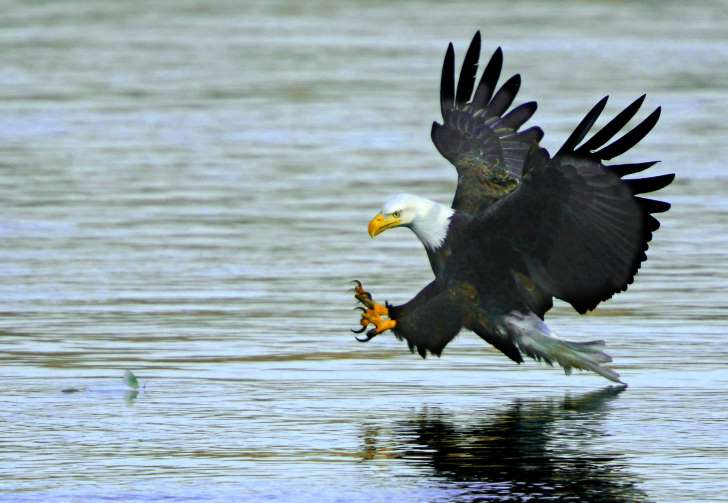February 23, 2016
Thirteen bald eagles found dead near a farm on Maryland’s Eastern Shore may have been poisoned, authorities say, in the largest single die-off of bald eagles in the state in 30 years.

American bald eagles are no longer endangered, but they are considered a protected species.
February 23, 2016
Thirteen bald eagles found dead near a farm on Maryland’s Eastern Shore may have been poisoned, authorities say, in the largest single die-off of bald eagles in the state in 30 years.

American bald eagles are no longer endangered, but they are considered a protected species.
Officials with the Maryland Natural Resources Police said they received a call around 2:30 p.m. Saturday from a man who said he was out looking for antlers that deer might have shed. The man came across what he initially thought was a dead turkey in a field on a farm in Caroline County. He discovered it was four dead bald eagles.
When officers arrived, they found nine additional dead bald eagles in the field on Laurel Grove Road in Federalsburg.
It was not immediately clear what had caused the birds to die, but there were “no obvious signs of trauma with these birds,” according to Candy Thomson, a natural resources police spokeswoman.
“A working theory is poisoning,” Thomson said Monday night. She added that someone may have sprayed a new chemical on a field that adversely affected the birds. Or someone may have used poison to kill rodents; if the rodents died outdoors and the eagles consumed their carcasses, the birds could get sick too.
“We just don’t know right now, which is why we’re asking the public if they heard anything, if they saw anything, we want to know about it,” Thomson said.
A reward of $2,500 is being offered for information in the case.
The discovery of 13 dead bald eagles was the largest single incident in decades for the state, officials said. At least three of the birds were mature, with the signature white heads and brown bodies. Two of the birds were close to being mature birds, officials said, and the rest were considered immature birds with no white feathers.
“It’s been 30 years since we’ve seen anything like this involving this many dead bald eagles,” Thomson said. “Three mature eagles, the ones we all love that look like the national bird, are gone.
“It’s sad that we have three eagles of mating ability that have been eliminated from our population.”
Thomson said the birds were tagged and the scene was photographed. The natural resources police and the U.S. Fish and Wildlife Service are investigating the incident.
Thomson said half a dozen investigators were at work on the case. They combed the field to look for other dead animals — none were found — and sent the dead eagles for examination to a lab in Oregon, which Thomson called the “best lab in the world.”
“This is significant,” said Catherine Hibbard, an agency spokeswoman. She said one investigator on the case said “he’s never seen that many dead at one time” in his eight years of work on the Eastern Shore.
Thirty years ago, officials said, eight bald eagles were found dead in Maryland. Officials said they believe those birds may have been poisoned.
And two years ago, two bald eagles were shot and killed in a week in Montgomery County. It is illegal to shoot eagles without a permit from the U.S. Department of the Interior.
In that case in Montgomery County, one eagle was found shot Christmas Day in a field in Brookville. The bird was feeding on a deer carcass when it was shot, officials said.
Officials had said they thought the Brookville case was one of mistaken identity where someone might have seen a bird sitting on a carcass of a deer and thought they were shooting a vulture.
A few days later, another eagle was found near a residence in Darnestown. That bird was found alive, but it died of its injuries. Police said an X-ray showed the eagle had been hit by bird shot. In the Darnestown case, officials said they were worried because someone came into a residential area and was possibly shooting where they should not have been.
Bald eagles are no longer on the endangered species list, but they are considered a protected species, according to the natural resources police.
Anyone with information is asked to call 410-228-2476.
Courtesy: Washington Post
















































































































